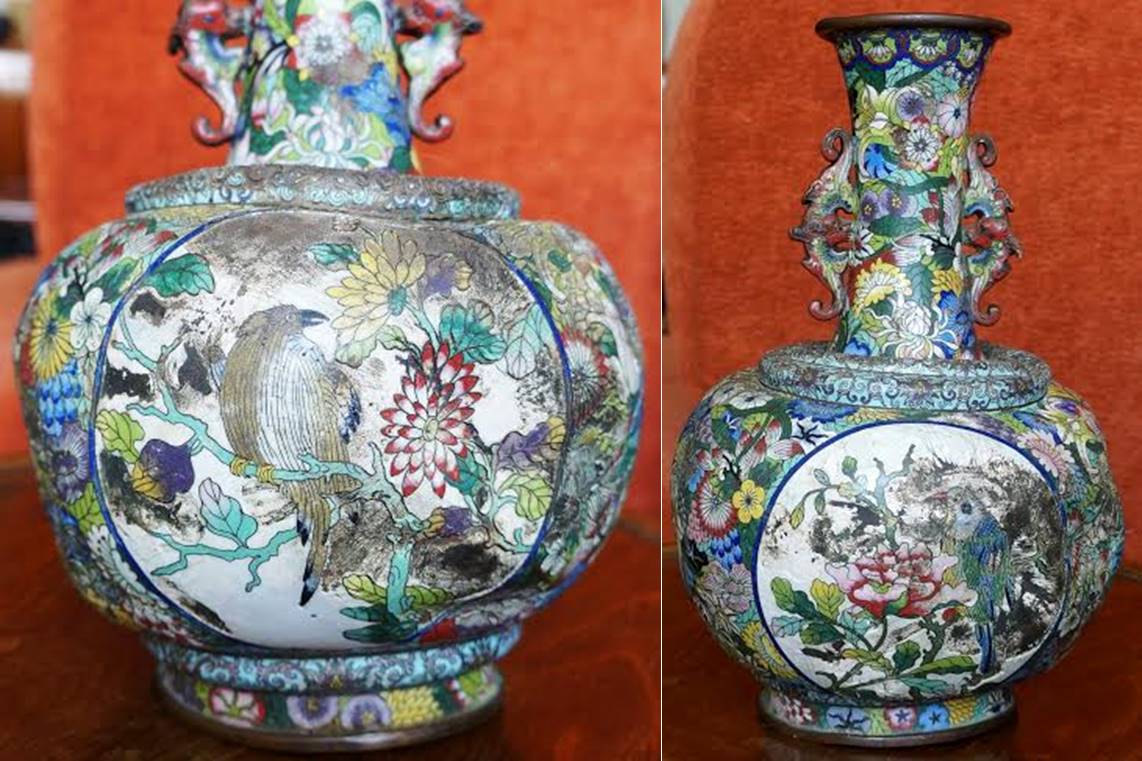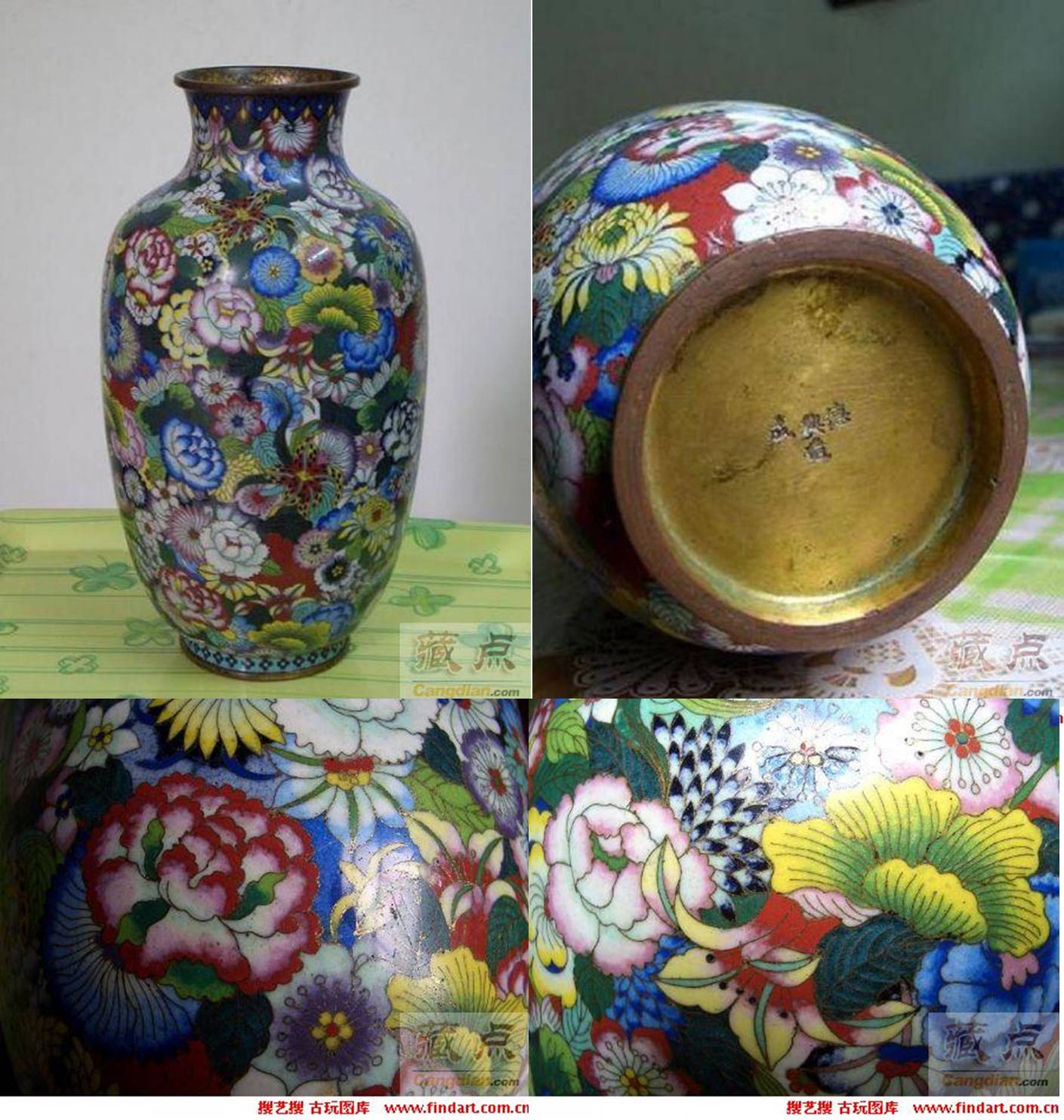
|
Subject:Thanks, rat. Enamel colors ambiguous, but...
Posted By: beadiste Sat, Jan 16, 2016
here are some other boxes, from China and Japan, from various decades between 1880 and 1930 (yes, I know, that's a 50-years span).
What puzzles me:
--the construction of the box is different from later Chinese humidors and boxes
--the fabric lining seems to appear more often in Japanese boxes
--the way the flowers, lotus pods, roots seem Chinese the way they're drawn, but their naturalism seems more Japanese
--the photos are terrible, so it's really hard to judge enamel quality, so hard to distinguish between fine Chinese and Meiji Japanese work
--the funky red-on-white character seal resembles 19th century "Jing Tai" Chinese seals, whereas actual Qianlong seals look very different.
--the odd characters on the lid remind me of Japanese renditions of Chinese characters (small koro pictured in following post)
.jpg)
.jpg)
.jpg)
|
 Mysterious Cloisonne Box Lid Inscription - 19th Century?
Mysterious Cloisonne Box Lid Inscription - 19th Century?  ( China & Japan ) - beadiste - Jan 14, 2016 (02:13 PM)
( China & Japan ) - beadiste - Jan 14, 2016 (02:13 PM)  Re: Mysterious Cloisonne Box Lid Inscription - 19th Century? - rat - Jan 15, 2016 (12:01 PM)
Re: Mysterious Cloisonne Box Lid Inscription - 19th Century? - rat - Jan 15, 2016 (12:01 PM)  Thanks, rat. Enamel colors ambiguous, but...
Thanks, rat. Enamel colors ambiguous, but...  - beadiste - Jan 16, 2016 (03:45 PM)
- beadiste - Jan 16, 2016 (03:45 PM)  Japanese cloisonne characters
Japanese cloisonne characters  - beadiste - Jan 16, 2016 (03:49 PM)
- beadiste - Jan 16, 2016 (03:49 PM)  Re: Japanese cloisonne characters - rat - Jan 17, 2016 (10:22 PM)
Re: Japanese cloisonne characters - rat - Jan 17, 2016 (10:22 PM)  DeXingCheng vase from a prior discussion
DeXingCheng vase from a prior discussion  - beadiste - Jan 16, 2016 (04:00 PM)
- beadiste - Jan 16, 2016 (04:00 PM)  Re: DeXingCheng vase from a prior discussion - rat - Jan 17, 2016 (10:24 PM)
Re: DeXingCheng vase from a prior discussion - rat - Jan 17, 2016 (10:24 PM)  DeXingCheng pieces can be fairly awesome
DeXingCheng pieces can be fairly awesome  - beadiste - Jan 18, 2016 (12:09 AM)
- beadiste - Jan 18, 2016 (12:09 AM)  Re:The inscription on the lid may 子 久 画 - painter Juan Gunvan? - Evgeny - Jan 17, 2016 (08:07 AM)
Re:The inscription on the lid may 子 久 画 - painter Juan Gunvan? - Evgeny - Jan 17, 2016 (08:07 AM)  Re: Re:The inscription on the lid may 子 久 画 - painter Juan Gunvan? - rat - Jan 18, 2016 (02:27 PM)
Re: Re:The inscription on the lid may 子 久 画 - painter Juan Gunvan? - rat - Jan 18, 2016 (02:27 PM) 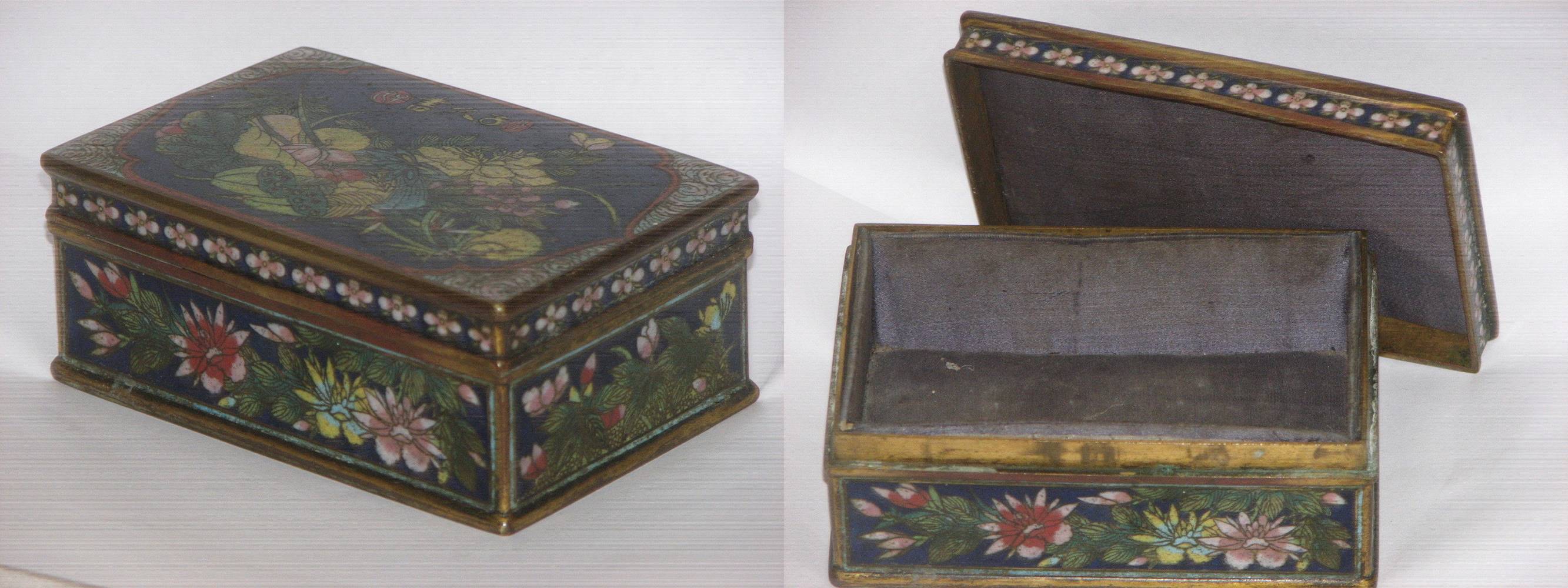
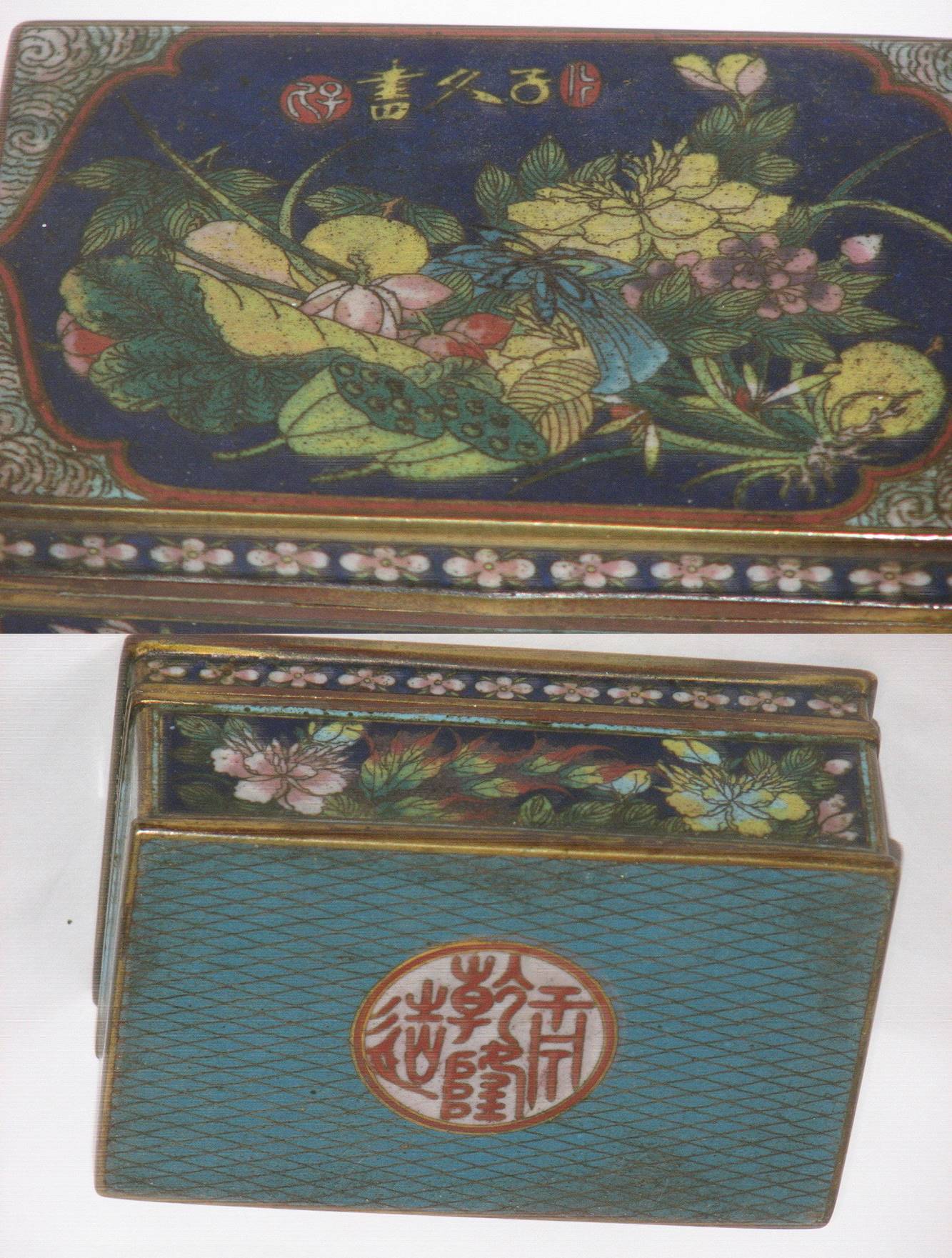
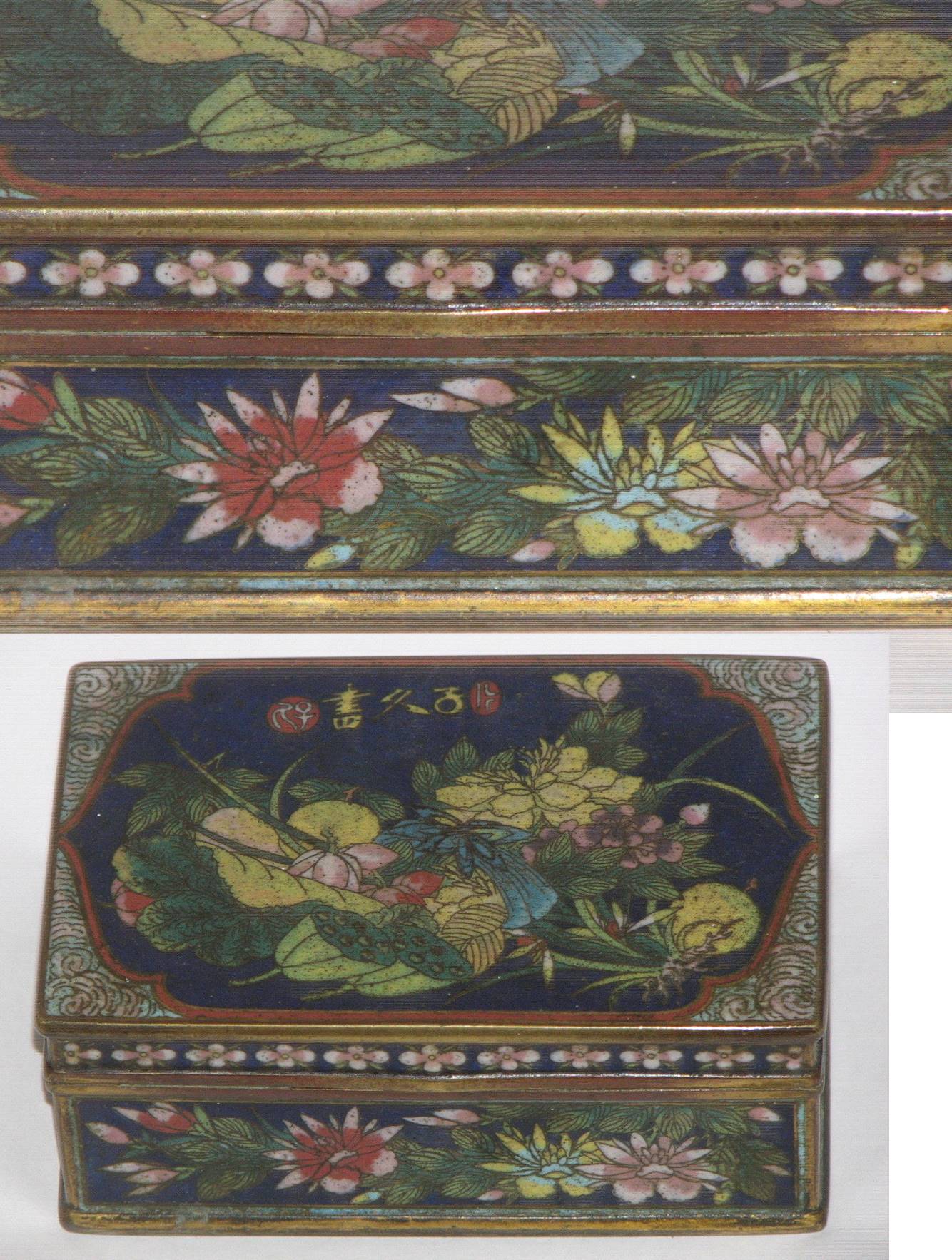
.jpg)
.jpg)
.jpg)
.jpg)
